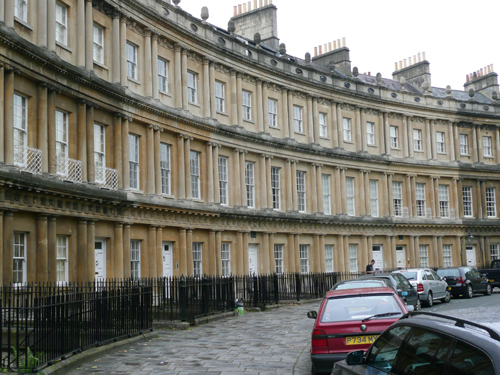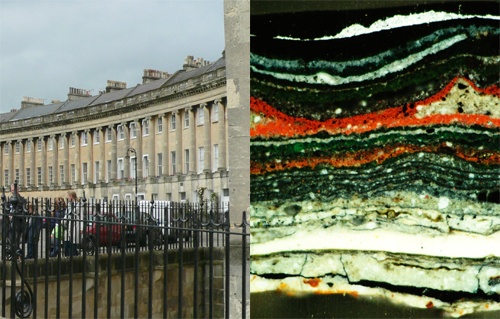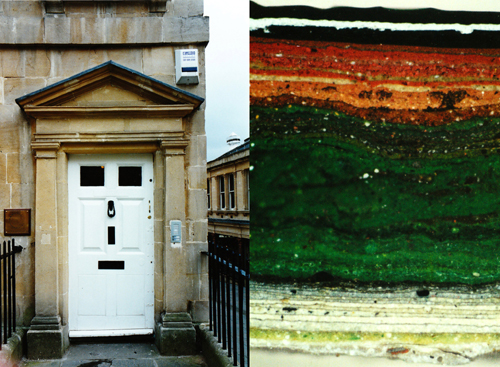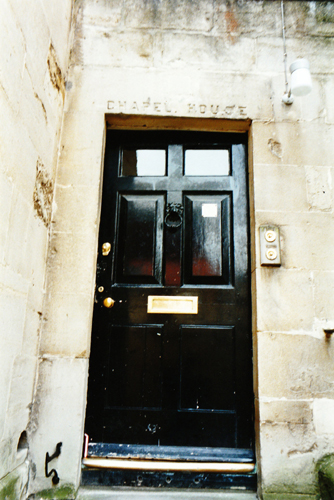
I was commissioned to carry out an analysis of the paint on a number of buildings in the City. The purpose was to establish the decorative history of representative doors, windows and railings and to see whether one colour predominated on each element.
How had external painted surfaces appeared when Jane Austen lived there in the early 19th century, for example?

The Royal Crescent was built between 1767 and 1774. When the railings were sampled, 27 individual schemes were found, which suggests an average repainting cycle of about eight years. The first scheme was a pale lead (grey) colour. This kind of colour was used on the next fifteen occasions – probably until the end of the 19th century. Dark green and red-brown has been used subsequently, with black employed twice and then only since the 1970s.


Alfred Street is believed to have been built in 1772. When the railings of No 7 were sampled approximately 45 individual schemes were found, which suggests a repainting cycle of about five years. A stone colour was employed initially and variants of this appeared until the 1810s, when lead colour was introduced. Dark green appears to have been used from the middle of the 19th century, before giving way to red-brown. Black was only applied on the last three occasions.


36 schemes were encountered on the railings of Pierrepont House. Lead colour was employed until the middle of the 19th century, when dark green was introduced. Black has never been used on these railings.


The railings of Chapel House, behind the Countess of Huntingdon’s Chapel, displayed approximately 38 decorative schemes. As the Chapel was built in 1765 this suggests a repainting cycle of about six years. The first two schemes were in lead colour and the third was in a stone colour. Unusually blue was employed on the fourth occasion. The remainder of the sequence consisted of variants of stone colour and dark green. Black had only been adopted in the 1980s.
As will be seen from the few examples cited here, grey and stone colours were employed on railings in the 18th and early 19th centuries. Dark green seems to have been generally adopted from about 1850 and, perhaps surprisingly, black only made its appearance in the late 20th century. Its use has nothing to do with being a sign of mourning for the death of Prince Albert – a belief held by many of the cognoscenti. This has been borne out by examining numerous examples of external ironwork across the country.
Much information has also been gained by a study of the colours used on doors and windows. Strong similarities were observed between the colours of Bath and the colours of The New Town, Edinburgh.
View Larger Map












[...] Click on this link to read the three Scribd articles. [...]
Thank you for this! I work at both the The Countess of Huntingdon’s Chapel and at No.1 Royal Crescent. I honestly found you by accident! Very Interesting!
Thank you. I helped Polly set up The Countess of Huntingdon’s Chapel all those years ago and used to lecture there quite a bit. My grandparents also lived at 28 Royal Crescent and I have many fond memories of visiting them in the 1960s.